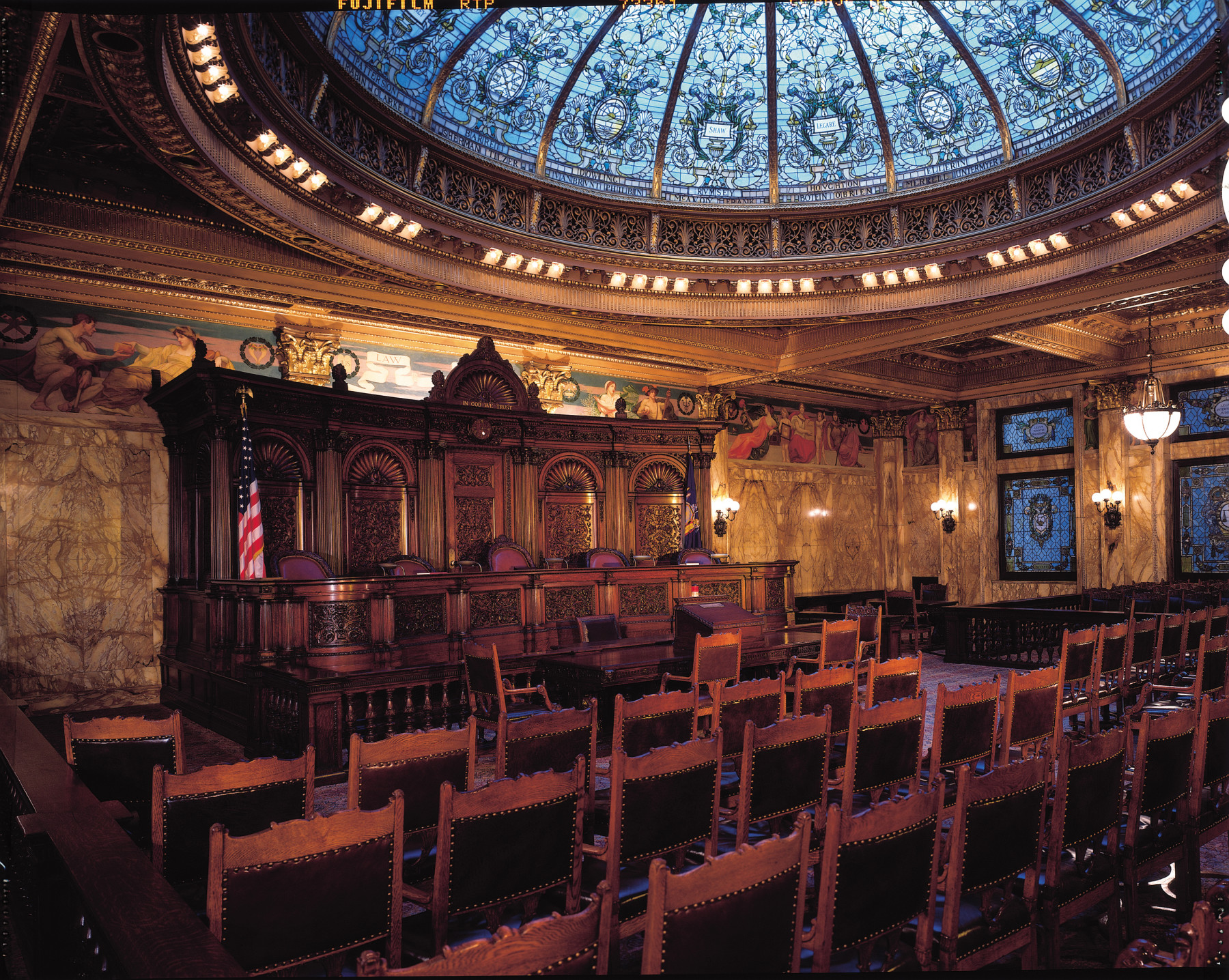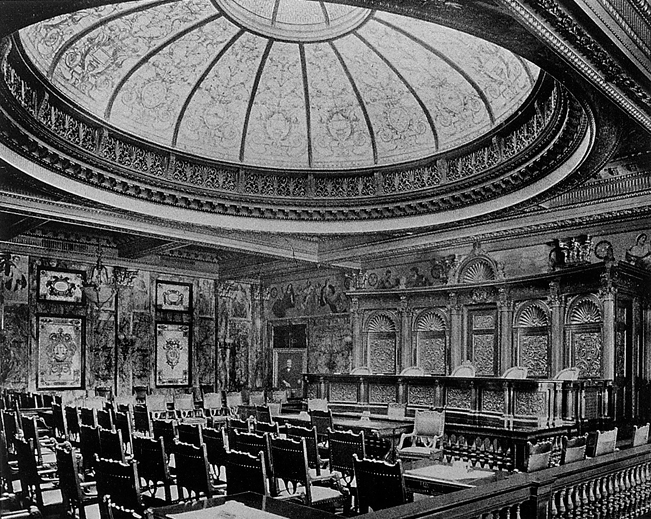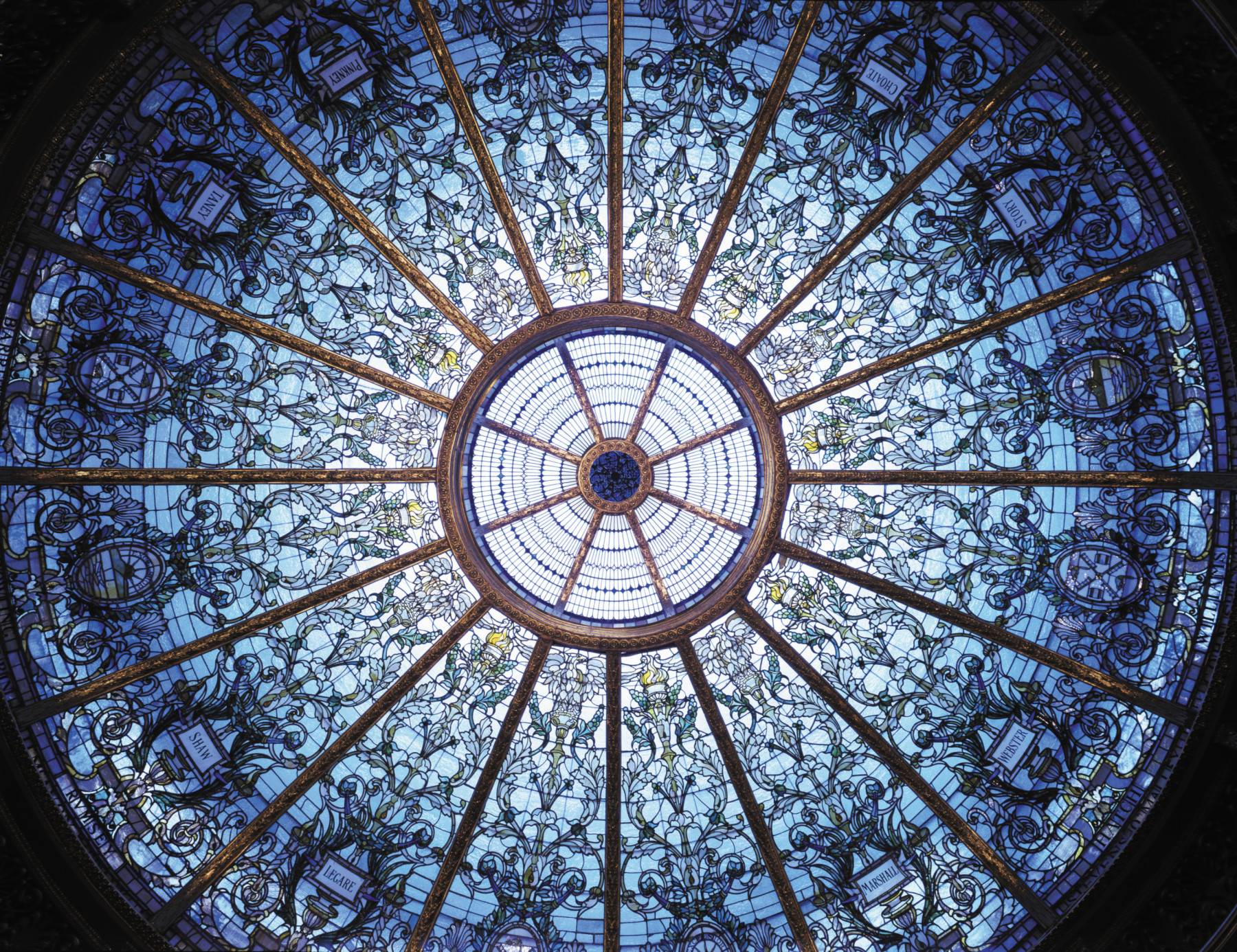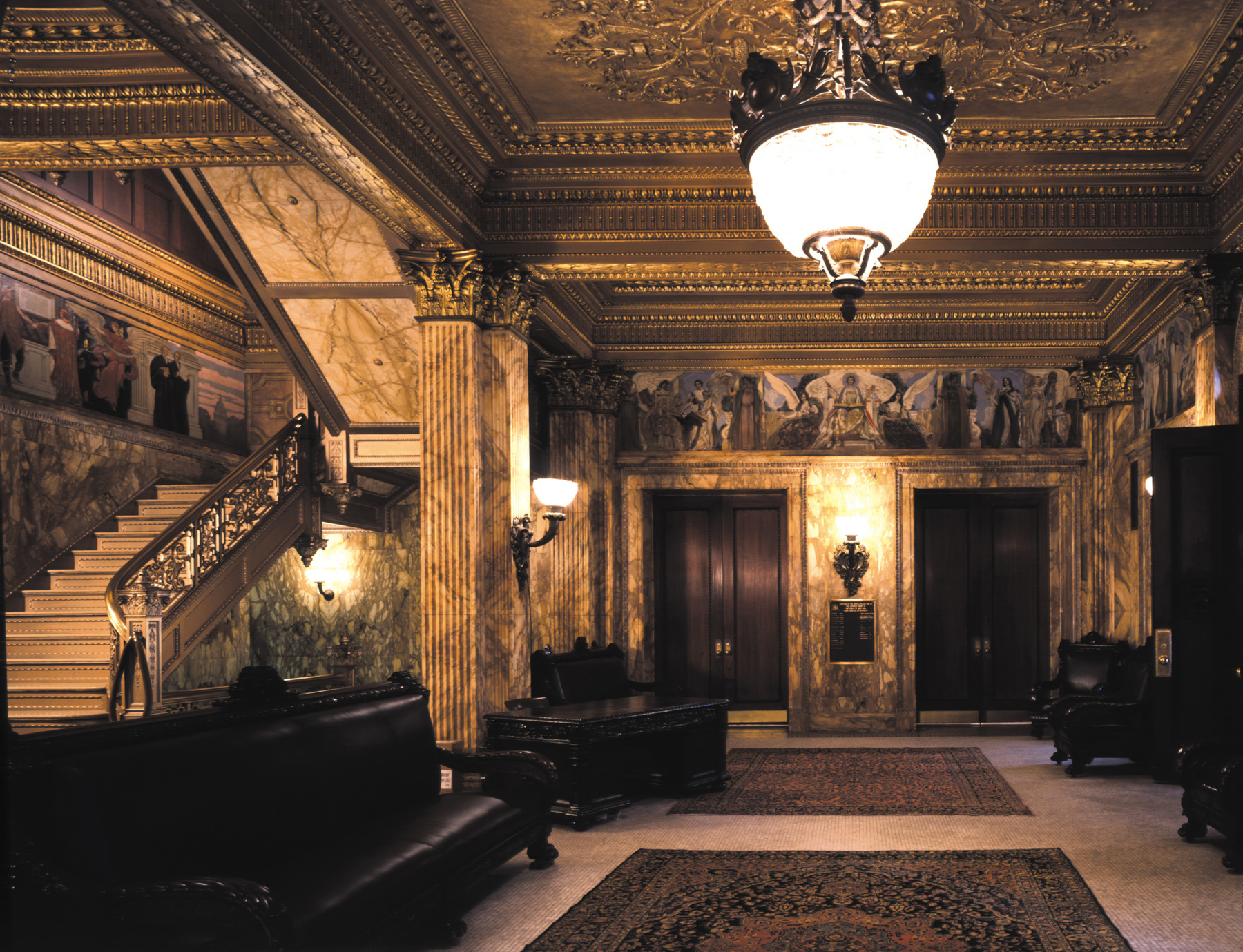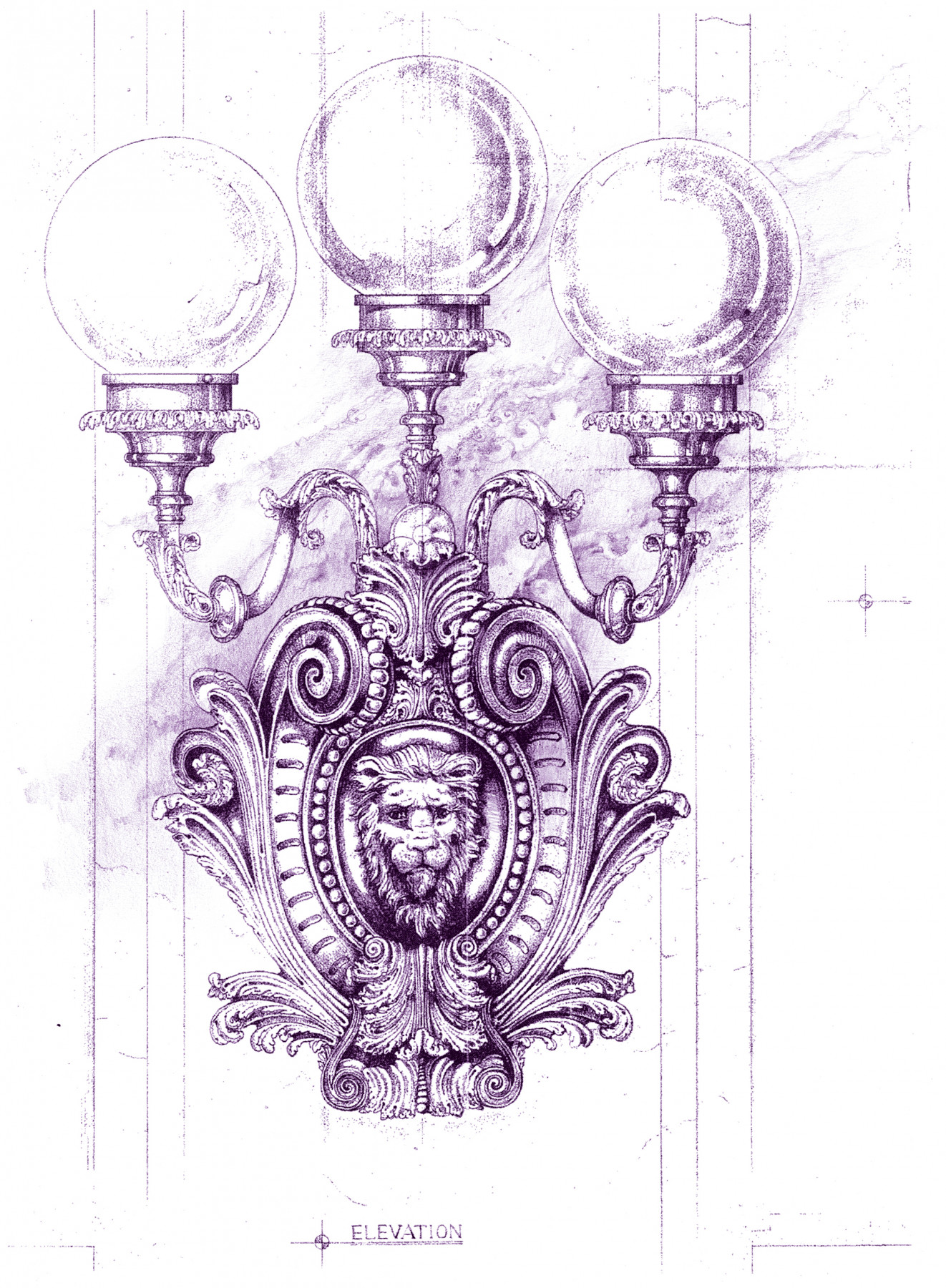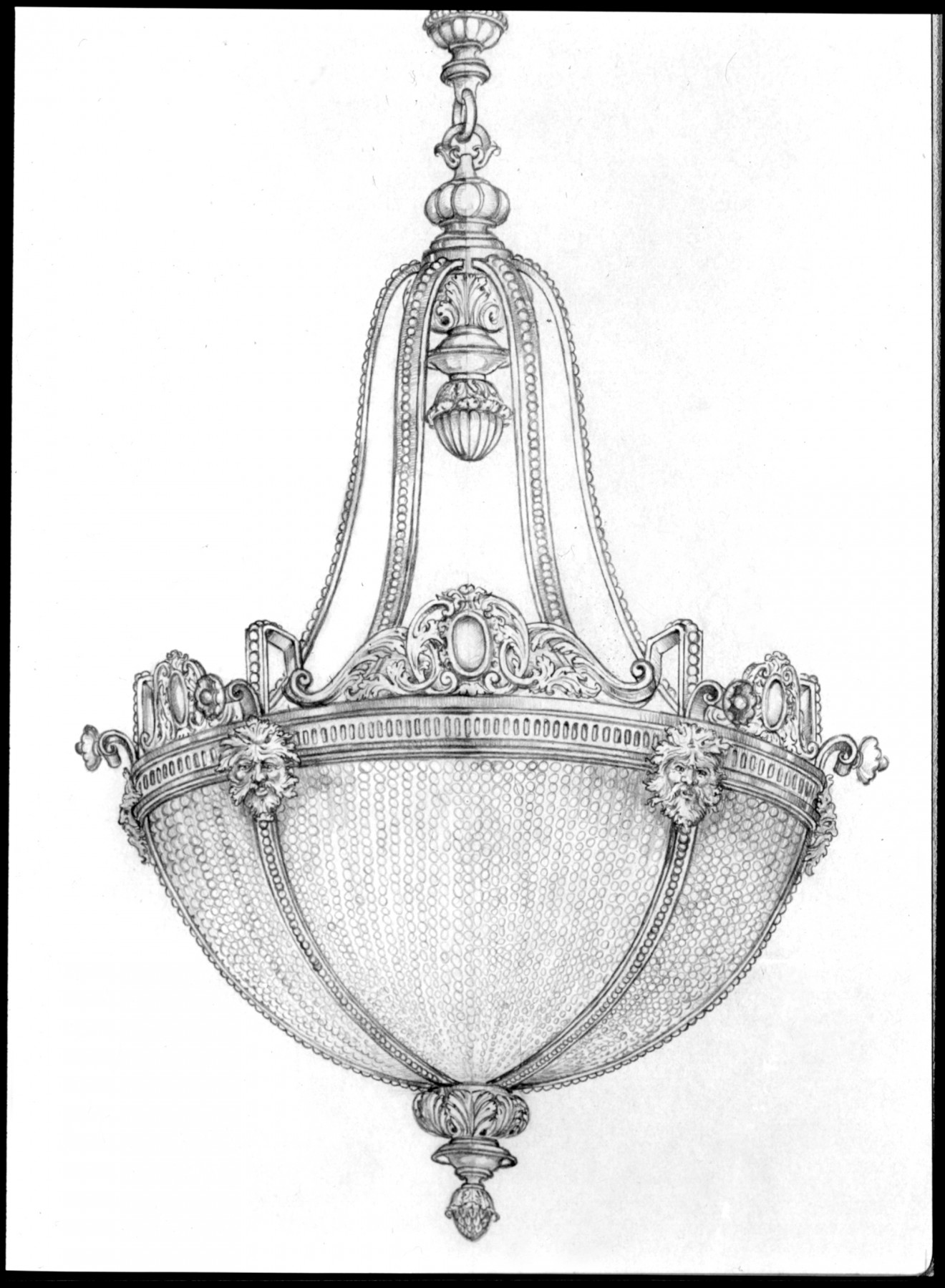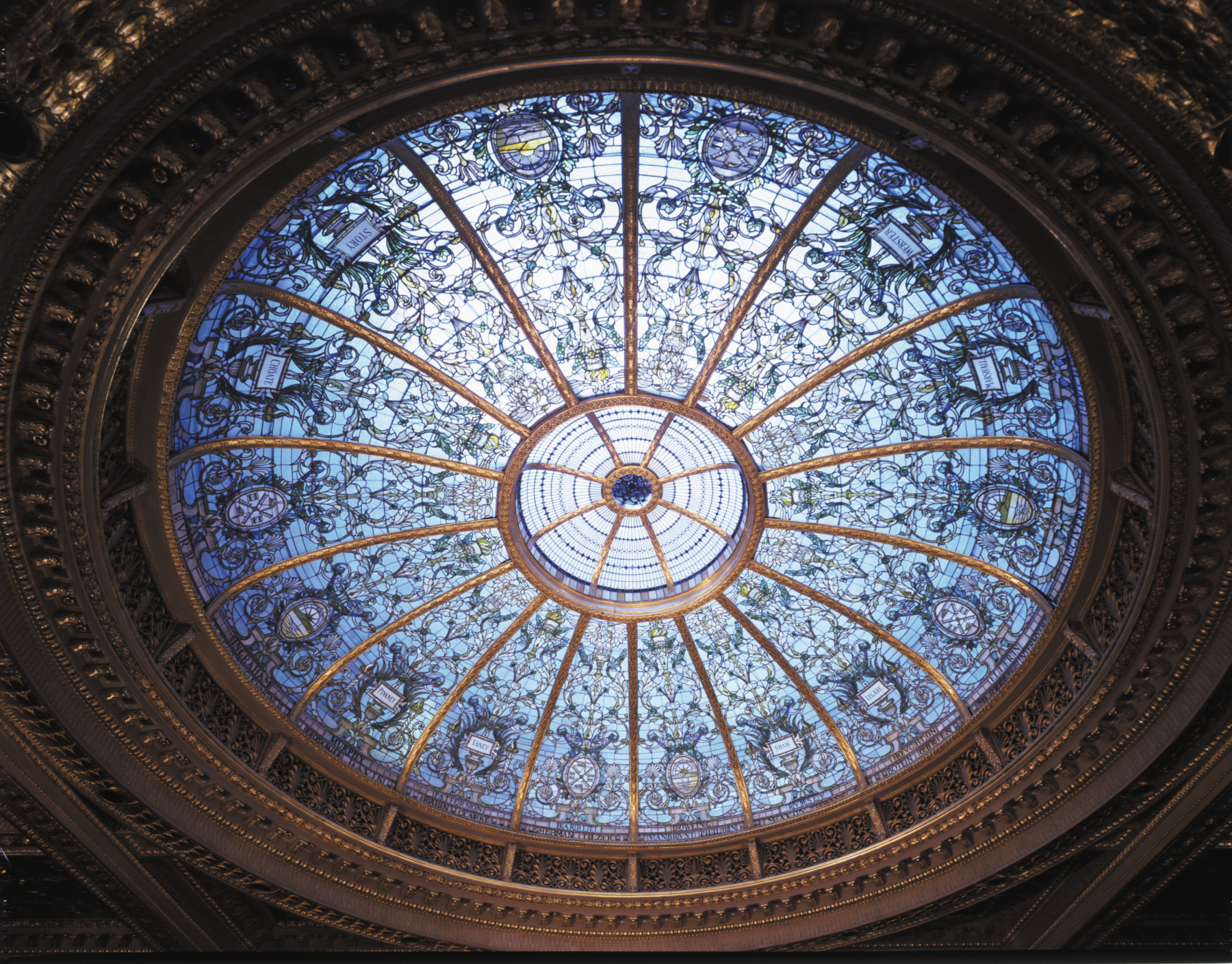
New York Appellate Court Lighting and Decorative Arts
The extensive use of decorative and fine arts consumed a third of the budget when this majestic building was completed. Notable for its integration of art with architecture, the Appellate Division Courthouse was designed by James Lord Brown and built between 1896 and 1900. In May of 2001 Rambusch was acknowledged when his building won the Lucy G. Moses Preservation Award of the New York Landmarks Conservancy.
John La Farge oversaw the interiors, which all relate in some fashion to the Law. The lobby soars, resplendent with gilded Corinthian pillars. Statues depicting the world’s great figures of justice, and many murals remain the work of well over sixteen leading artists of the day. Rambusch had been intimately involved in the restoration of this grand palace, which took place over two decades. It is the courtroom itself, however, where our craftspersons first applied their skills of conservation and design to the aging stained glass ceiling.
This intricate central dome, thirty-six feet in diameter, was originally crafted by Maitland Armstrong. Rippled and buckling from age, it suffered from a weakened support system. In 1982, Rambusch was entrusted with its complete removal, conservation and reinstallation. All off-site work was completed in our workshops.
Executing the design of Platt Byard Dovell Architects, our Glass Studio recreated the original twelve-foot stained-glass oculus. At some point in the history of the Courthouse, this focal point had simply disappeared. In response, our artisans fabricated one from scratch, mindful of the need to harmonize every detail of new with old. Heavy lead cames had been used previously to repair cracked glass in the existing ceiling. Visually discordant, these were removed and the damage repaired by our conservators, who discreetly edge-cemented the pieces together.
Missing from the courtroom and lobby were original wall sconces. Period photographs and a working knowledge of historic luminaires led our designers to the appropriate solution of a custom crafted three-armed fixture. Still in place, but severely damaged, hung an elaborate lobby chandelier of crystal and bronze. It hung at some distance from the viewer. However, it is often in the details where overall impressions of form and style reside; thus, our Custom Lighting group deemed it essential that, to achieve the original effect within the space for which this chandelier was designed, it was critical to restring the thousands of crystal beads with an authentic nickel plated wire or correct color. Perhaps fussy to some, the tenacity and skill of our staff is reflected in the faces of those visitors who merely look up. Today the Appellate Court lives as a dignified civic identity, a Beaux Arts monument where no one can tell old from new.
